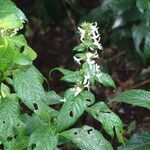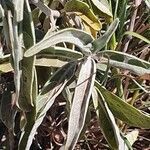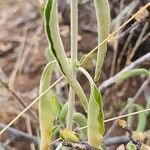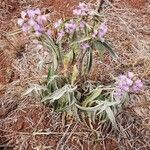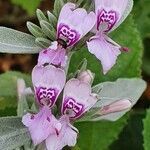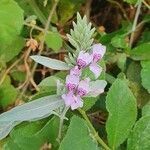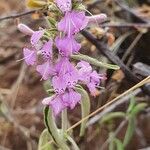Perennial suffrutex, 0.25-1.50 m high. Leaves with cystoliths not predominantly boomerang-shaped. Calyx 4-lobed; tube 1.5-4.0 mm long. Corolla pubescent; lip in lower position lanceolate. Flowering time Dec.-Oct. Seeds smooth or asperous.
Erect, shortly hairy subshrub to 1.5 m. Leaves opposite, ovate; bracts aristate. Flowers in axillary clusters, appearing verticillate, mauve, calyx 4-fid.
A herb or shrub. The leaves are hairy and dark green. The flowers are in spikes and are tube shaped and mauve or pink. The petals curl.
